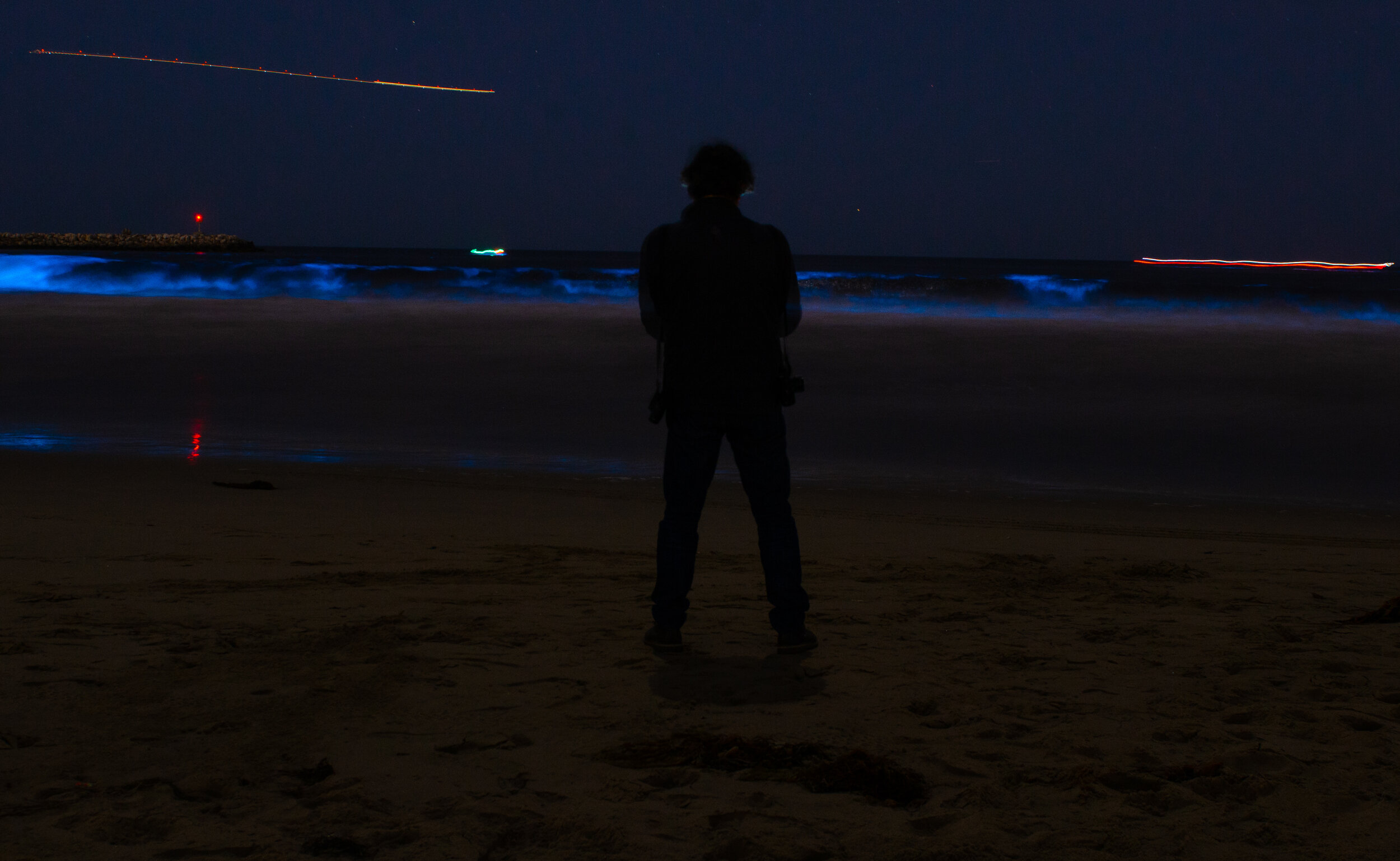The Last Wave of Bioluminescence
A man takes a video glowing waves caused by bioluminescent waves in Marina Del Rey, California, on Friday, May 1, 2020. (Kiran Baez/The Corsair)
After nearly a month of lighting up shores from Baja California to Santa Cruz, the bioluminescent waves have faded. The phenomenon, which drew national media attention, entertained thousands of people eager to see the rare spectacle despite California’s beaches being closed due to the ongoing coronavirus pandemic. Along several beaches, some local police gave up trying to enforce beach closures due to the large crowds.
At the beaches of Santa Monica, Marina Del Rey, and Malibu, groups of people ranging from large parties to solos flocked to see the lights. Prolonged by chaotic and scarce parking, most were soon tempered by the enigmatic waves inviting onlookers to quiet contemplation and meditation.
“Last night was truly one of the most magical nights of my life," wrote Patrick Coyne, a Los Angeles based photographer who helped bring major media attention to the phenomenon.
The source of the ethereal blue light is millions of tiny dinoflagellate phytoplankton known as Lingulodinium polyedrum or L. Poly, which measures less than 35 micrometer in diameter. The occurrence appears as algae bloom, which can often have harmful effects upon the local marine life. When disturbed, the L. Poly emit a faint blue light that acts as a protection mechanism, guiding larger predators to the location of their would-be demise, and also scaring off any unwanted and unprepared assailant.
Whilst red tide and what creates it is not completely understood, an increase of nitrates and iron in the water - quintessential elements to the survival and growth of plankton - often act as a major factor. As the levels increase, larger populations can be supported, allowing the algae to explode in density to the point of visibility as red tide.
Sudden changes in nutrients in the water can often be traced back to human pollution, commonly from fertilizer runoff, though red tide happens around the world naturally as well. This particular algae bloom, which was first reported in Newport Beach, may have originated from storm drain runoff caused by heavy rain a few days before the first sighting, though the true origin has yet to be confirmed.
Whilst many red tides are toxic to humans, California’s L. Poly does not produce sizable amounts of Yessotoxin, the primary component in the poisonous cocktail produced by many algae blooms, though L.Poly does mildly irritate human skin, prompting many surfers and swimmers to dive into the waves for a once-in-a-lifetime experience.
Though algae blooms are not uncommon along the California coast, not all are bioluminescent, and few reach the size and scale of the one currently being experienced, making it an incredibly rare experience. In 2018, bioluminescent waves along a 15-mile strip of the coast were reported in national media; this month’s occurrence consistently ranged from Baja California in Mexico to Los Angeles; with some sightings as far south as Acapulco, Mexico, a distance of over 2,100 miles, according to Michael Latz, an authority on bioluminescence from the Scripps Institute of Oceanography at University of California, San Diego.
Though scientists consistently stated that they were unable to accurately predict when the phenomenon would end, its signs of the awesome waves’ of imminent demise were equally dramatic; the once deep rust-colored water has now lost much of its intensity, with some patches entirely returning to a normal blue-green color.
Along the beaches and in the Venice canals, scores of dead fish have appeared, common after the end of a red tide due to dangerous chemicals released by the algae’s decay. In addition, a thick stench of sewage was reported up and down the Southern California coast, another sure indicator of the phenomenon's sudden departure.
“When [red tide] reaches its final phase, then it’s going to die off. The organisms, as they break open and die, they’re releasing organic material into the water," said Latz. "There are bacteria that are feasting on that organic material, and they’re releasing odors." The stench of decomposing algae reached as far as a mile inland.
The beginning of the end coincided with the reopening of Los Angeles’ beaches on May 13, increasing the frenzy of people hoping to catch the last glimpses of the surreal and ephemeral light in the darkness.











